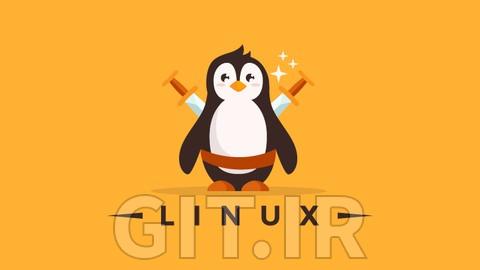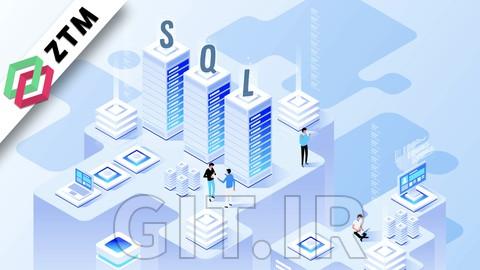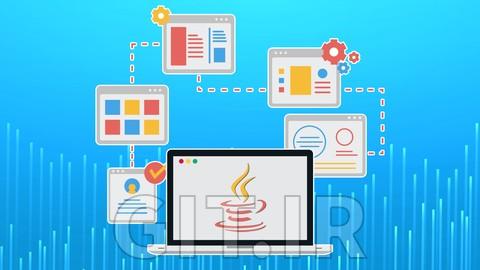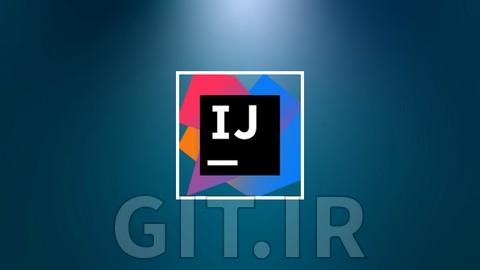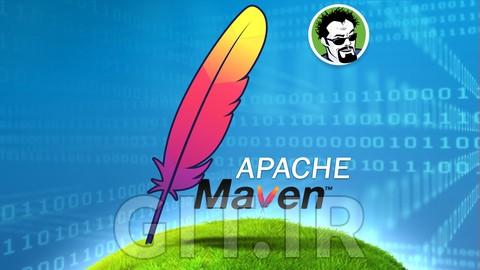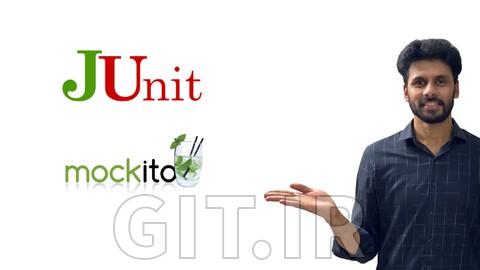The 2025 Java Developer RoadMap (with Resources)
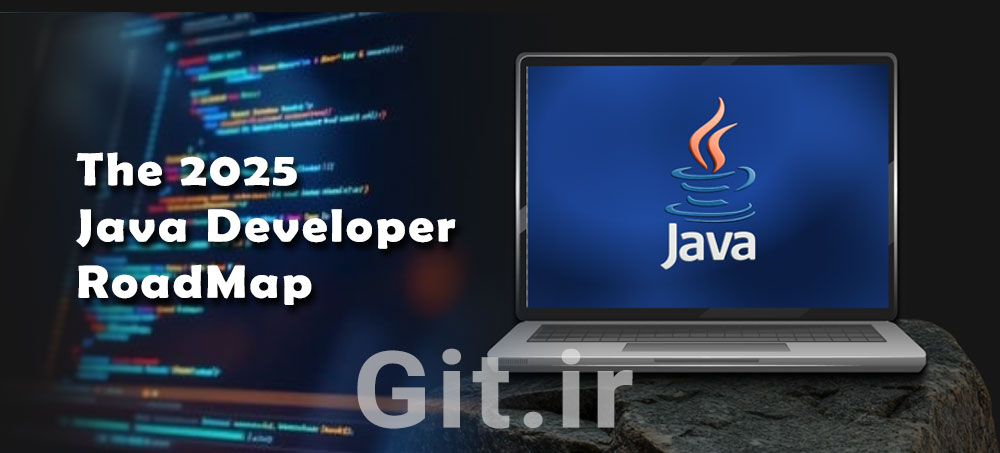
If you intend to become a professional Java developer or want to upgrade your current skills in this language but don't know where to start and what technologies, tools, frameworks, and libraries you should learn, you've come to the right place.
In this article, a comprehensive roadmap for Java programmers is presented that shows you what skills, tools, frameworks, and libraries you need to become a professional Java developer and how you can become a complete Java programmer in 2025.
In this roadmap, many common questions for Java developers are answered; including which technologies should be learned, which tools improve skills in Java, and which frameworks are essential to learn.
In designing this roadmap, efforts have been made to make the path as simple and concise as possible. Instead of introducing multiple options, the focus is on standard tools and libraries used in the industry so that the learning path is understandable and executable for everyone.
Of course, you don't need to learn all sections of this roadmap completely to become a successful developer. The goal of this map is to create a guide path to direct your learning, not to mandate following all its steps.
Essential Skills for Every Java Developer
Now, let's review the Java developer roadmap step by step to see how you can learn the core skills needed to become a Java developer in 2025:
1. Git and GitHub
One of the most popular version control systems, and working on modern projects without it has become almost impossible.
As a programmer, you should be familiar with Git and GitHub, basic Git concepts like branch, master, checkout, staging, push, and pull, and have worked with important commands like git diff, git commit, and so on.
It is recommended that Java programmers learn Git and GitHub, and if they have previous experience with Git, upgrade their skills. To get started, you can use courses like «The Git Complete Guide».
Git Complete: The definitive, step-by-step guide to Git
With this step-by-step course with easy examples, you will progress from beginner to expert in Git source control and become a professional in Git.
2. Linux
Learning Linux is not only essential for web developers but also highly important for every programmer. It is recommended to dedicate time to learning basic Linux commands and concepts.
Since most Java applications run on the server side, they are usually deployed on Linux servers. For this reason, familiarity with key Linux concepts and commands is essential for Java developers.
Developers should be able to work with commands related to file management, checking disk space, process management, and network-related commands.
To strengthen Linux skills, the course Linux Mastery: Master the Linux Command Line in 11.5 Hours is a very suitable option; especially for those who want to start working with Linux commands from a beginner level.
Linux Mastery: Master the Linux Command Line in 11.5 Hours
This course teaches the Linux command line from scratch. With this project-based and very engaging Linux course, you can improve your career!
3. Data Structures and Algorithms
Data structures and algorithms are the main pillars of every program. Having a deep understanding of these concepts is very important for getting a new job or advancing in your current position.
Every Java developer should be familiar with basic data structures like Array, Linked List, Hash Table, Binary Tree, Queue, Stack, and Graph. Also, familiarity with problem-solving methods like Dynamic Programming is essential.
If you are familiar with more advanced data structures like Trie, B-Tree, or AVL Tree, that's great. But if you haven't learned these concepts yet, it is recommended to enroll in a comprehensive course like Data Structures and Algorithms: Deep Dive Using Java. This course teaches all fundamental concepts related to data structures and algorithms completely.
Data Structures and Algorithms: Deep Dive Using Java
In this course, you will learn about arrays, linked lists, trees, hash tables, stacks, queues, Heaps, sorting algorithms, and search algorithms. Those who want to understand how components work under the hood will benefit greatly from this course.
4. HTTP / HTTPS Protocol
The HTTP protocol is the backbone of the web, and having sufficient knowledge of HTTP and HTTPS is essential for every web developer.
Java developers should know how these protocols work, what the difference between them is, and what each of the HTTP methods like GET, POST, PUT, DELETE is used for.
Familiarity with concepts like SSL and TLS is also very important, as data security and communications on the web depend on these technologies.
For better learning of these concepts, you can use educational courses related to HTTP, SSL, and TLS that help understand how these protocols work and ensure security in web communications.
5. Computer Science Fundamentals
If you are building applications that are used globally and need to display information in different languages, familiarity with Character Encodings is very essential.
Character encoding actually tells the browser how to display the data. Proper understanding of this concept helps you prevent issues like incorrect display of letters or special characters in different languages.
6. SQL
Learning SQL is one of the basic and essential skills for every Java developer, as it helps you better identify and resolve back-end issues.
With knowing SQL, you can understand Stored Procedures, query the database, and determine whether the problem is in the Java layer or the database layer.
It is recommended that all programmers — whether in Java or languages like Python — learn SQL. This skill has a relatively easy learning curve and will be useful in every developer's career path for many years.
One of the recommended courses for learning SQL is the course Complete SQL and Databases Bootcamp: Zero to Mastery by Andrei Neagoie.
Complete SQL and Databases Bootcamp: Zero to Mastery
In this course, you will gain a deep understanding of SQL, database management, and design, and learn how to work with databases like MySQL, PostgreSQL, and others along with plenty of exercises.
7. Design Patterns
Undoubtedly, familiarity with Design Patterns is essential for every programmer. These patterns provide standard and reusable solutions to common problems in software design and play an important role in improving code structure, scalability, and maintainability.
If you want to gain skills in OOP Design Patterns, it is recommended to enroll in the course The Java Design Patterns Course.
The Java Design Patterns Course
You will learn how to implement specific design patterns and also learn why they are the best approach and how they turn you into an incredibly productive and great Java programmer.
Java Developer Roadmap in 2025 (with Resources)
In this section, we examine the Java developer roadmap step by step to see what tools, frameworks, libraries, APIs, and skills you should learn to become a professional Java developer in 2025.
1. Tools
The tools section is divided into several subsections. The first one is the Integrated Development Environment (IDE), which is the main work tool for a Java developer.
An IDE provides features like compile, run, debug, profiling, testing, code comparison, refactoring, and many other capabilities.
1.1 Integrated Development Environments (IDEs)
For Java developers, there are two main development environments: Eclipse and IntelliJ IDEA. You can choose either one based on your preference and experience. Many professional developers use IntelliJ IDEA, while some still prefer Eclipse.
It is recommended to learn shortcuts, views, and various IDE features well in your work environment so that you can become a skilled and efficient developer.
If you are looking for an educational resource for deeper learning of IntelliJ IDEA features, the course IntelliJ IDEA Mastery: Essential Skills for Developers is a very suitable option to start.
IntelliJ IDEA Mastery: Essential Skills for Developers
In this course, you will discover the full power of IntelliJ IDEA for efficient and integrated software development. You will deepen your understanding of IntelliJ IDEA's powerful features, including code navigation, refactoring, debugging, and version control integration.
1.2 Build and Deployment Tools
The second part of tools is Build Tools used for building and deploying projects. Among the most famous ones, Maven and Gradle can be mentioned.
Using one of these tools is sufficient. The older tool ANT also exists, but it is mostly used for Legacy projects. For new Java projects, Gradle is recommended because it is more concise and efficient than Maven.
If you want to learn both Maven and Gradle tools, there aren't many educational resources available, but to get started, you can use the course Apache Maven: Beginner to Guru by John Thompson.
Apache Maven: Beginner to Guru
In this course, you will master Apache Maven for building and deploying Java and Spring Boot applications.
1.3 Containers and DevOps Tools
The third and one of the most important sections includes containers like Docker and Kubernetes, CI/CD tools like Jenkins and TeamCity, and infrastructure automation tools like Chef, Puppet, and Ansible.
Among these tools, Docker has high importance because it both simplifies setting up the development environment and makes deploying Java microservices easier.
Kubernetes is an advanced tool and is not essential for all Java developers, especially if they are not working in DevOps or managing scaling and deployment of projects is not their responsibility. However, having general familiarity with it is useful from a general knowledge perspective.
It is recommended that Java developers have good knowledge of Docker and basic knowledge of Kubernetes. To learn both tools, you can use the course Docker & Kubernetes: The Practical Guide by Maximillian Schwarzmuller.
Docker & Kubernetes: The Practical Guide
In this course, you will get to know Docker, Docker Compose, multi-container projects, deployment, and Kubernetes from scratch. You will learn in-depth instructions for deployment - manual deployment and deployment with managed services like AWS ECS, core Kubernetes concepts and architecture, and more.
2. Java APIs
One of the most important sections to learn is JDK APIs, which is very essential for every Java developer. This section is extensive and divided into subsections like Java Collections Framework, Java Concurrency, Java IO, and Java 8 APIs.
2.1 Java Collections Framework
One of the most vital Java APIs is the Java Collections Framework, which provides standard implementations of data structures like Linked Lists, Sets, Stacks, Queues, Hash Tables, Priority Queues, and others.
At minimum, you should be familiar with everyday objects of this API like ArrayList, HashMap, HashSet, LinkedHashSet, and TreeSet. Each has different features; for example, ArrayList is a dynamic array that can grow, and HashMap is the standard hash table implementation used for storing key-value pairs. Similarly, HashSet is an implementation of a set that does not accept duplicate elements.
2.2 Java Concurrency
After Java Collections, the most important API in Java is related to Multithreading and Concurrency. Having a deep understanding and skill in the Java Concurrency API is essential to become a professional Java developer.
Java developers should be familiar not only with basic concepts like Thread, Runnable, Object Locking, and Synchronization, but also with concepts like Deadlock, Livelock, Race Condition, and methods to counter them.
Also, familiarity with more advanced Java concepts, like Synchronizers added from Java 5 onwards — including CyclicBarrier, CountDownLatch, Phaser, and CompletableFuture — along with working with Futures and performing asynchronous (Async) operations in Java, is very important.
2.3 Java IO
Based on experience interviewing over 100 Java programmers, it has been observed that many of them lack sufficient knowledge of Java IO and NIO, while they have good familiarity with Java Collections and Java Multithreading API. It can be understood that most people spend a lot of time learning those two sections, but one cannot overlook the importance of these vital APIs.
To develop a real and professional Java application, you need to work with classes like File, InputStream, OutputStream, Reader, and Writer from the java.io package, which is the core of the Java IO API. Additionally, for writing Socket-based applications, you should be familiar with classes like ByteBuffer, FileChannel, Selector, and other key classes from java.nio.
Unfortunately, there are limited resources for learning Java IO and NIO specifically, but the course below is an excellent resource for mastering these APIs and covers important and practical concepts completely.
60 Days of Java : The Complete Java Masterclass
In this course, you will master Java by building real projects and learn JavaFX, Spring Boot, REST APIs, and more.
2.4 Java 8 Features
Another essential API that every Java programmer should learn is Java 8 features, which have significantly changed the way Java is programmed.
To become a Java developer in 2025, you should be able to use Lambda expressions, Stream API, Optional classes, and the new Date and Time API.
Without mastery of these features, writing Java programs in 2025 will be very difficult. Also, most libraries no longer support versions older than Java 8, so don't delay learning Java 8 features anymore. More than 5 years have passed since the release of Java 8, and it's time to start learning now.
Despite the importance of Java 8 for Core Java developers, it is recommended, if possible, to also learn other features introduced from Java 9 to Java 13 like Modules, var for local variables, Static Factory Methods for Collections, Text Blocks, Strings in Switch, and others.
3. Frameworks
One of Java's strengths is its dynamic and extensive ecosystem that includes a large number of frameworks and libraries for almost every task.
Usually, it is not recommended for a Java developer to learn a framework before needing to use it. However, there are some frameworks and libraries that every Java developer is better off being familiar with, including: Spring, Spring Boot, Hibernate, Log4j, and JUnit.
3.1 Spring Framework
If you want to become a professional Java developer in 2025, Spring Framework should be your first choice to learn.
This framework is one of the most popular Java frameworks, and almost all Java applications I've worked on in the past five years have used this framework.
Spring Framework facilitates writing clean, testable, and maintainable code by providing features like Dependency Injection and Inversion of Control. Additionally, this framework has a rich API for performing everyday tasks, making it essential for every Java developer to learn.
For learning Spring Framework, the course Spring Framework 6: Beginner to Guru is one of the best available resources. This course covers the latest Spring 6 version and teaches Spring in a more practical and applicable way than other courses.
Spring Framework 6: Beginner to Guru
In this course, you will learn everything about the Spring framework. You will get familiar with Spring Framework 6, Spring Boot 3, Spring AI, Spring MVC, Spring Data JPA, Spring Security, and OAuth/JWT.
3.2 Hibernate
The second framework that is recommended for every Java developer to learn is Hibernate, which is built on JPA (Java Persistence API).
In fact, Hibernate was introduced before JPA, but since JPA is a standard API for implementing the database layer in Java, Hibernate implements it.
Why is learning Hibernate essential? Most Java applications interact with databases, and working with databases solely using JDBC without a suitable framework like Hibernate is difficult and time-consuming.
Hibernate provides important features like Caching and Transaction Management out of the box. This means you can focus more time on your application logic and don't need to manually implement caching in the application. This capability significantly improves the performance of Java applications and is one of the most important reasons for using Hibernate.
For learning Hibernate, there are many resources available in the market. The course Spring & Hibernate for Beginners is one of the best options because you can learn Spring and Hibernate in one class at the same time, and there's no need to enroll in separate courses.
[NEW] Spring Boot 3, Spring 6 & Hibernate for Beginners
In this course, you will get familiar with Spring Boot 3, Spring 6, Spring Core, Spring REST, Spring MVC, Spring Security, Thymeleaf, JPA, Hibernate, and MySQL.
3.3 Spring Boot
Another framework that is recommended for every Java developer to learn in 2025 and beyond is Spring Boot. This framework develops the philosophy of simplifying Spring and makes working with Spring itself easier.
Just as Spring simplifies the process of creating a Java application, Spring Boot also makes creating Spring-based applications easier. Features like Auto-Configuration eliminate much of the complexity of configuring Spring applications. Additionally, the Starter POM feature groups commonly used dependencies into reusable POMs.
3.4 Java Microservices Frameworks — MicroProfile, Micronaut, and Quarkus
Although learning Spring Boot and Spring Cloud is sufficient for developing microservices, there are a few more advanced frameworks you can explore, including Eclipse MicroProfile, Micronaut, and Quarkus.
3.4.1 Quarkus
Quarkus is one of the promising frameworks for Java developers. This framework is a Kubernetes Native Java Stack designed for OpenJDK HotSpot and GraalVM and leverages the best Java libraries and standards.
Quarkus optimizes your application for GraalVM and HotSpot to have very fast boot time and very low memory consumption (not just Heap). It also provides instant scalability and high memory efficiency in container platforms like Kubernetes using a technique called Compile-Time Boot. You can use both familiar Imperative code and non-blocking Reactive style when developing applications in Quarkus.
3.4.2 Eclipse MicroProfile
This project was created with the aim of optimizing Java Enterprise for microservices architecture and is supported by Eclipse, one of the leading organizations in Java and the developer of Eclipse IDE.
The goal of MicroProfile is to define standard APIs for building microservices and provide portable applications across multiple different Runtimes. The current version of Eclipse MicroProfile is 7.0, and learning it will be useful for Java developers in 2025.
3.4.3 Micronaut
Micronaut is a modern JVM-based framework designed for building modular, easily testable microservices and serverless applications.
This framework is Polyglot and enables application development with Java, Kotlin, or Groovy. Key features of Micronaut include short startup time, very high performance, and low memory consumption.
4. Testing
Testing is one of the vital skills for every Java developer, especially Unit Testing, Integration Testing, and Automation Testing.
At minimum, every Java developer should be familiar with JUnit and Mockito; two very popular libraries for unit testing and creating Mock Objects.
By learning these two tools and being able to use them effectively to write unit tests, your code quality will significantly increase, and you will be a more professional Java developer.
In addition, there are more advanced libraries like Cucumber for business-based testing and Robot Framework for integration testing, but there is no replacement for JUnit, and you will always need it.
For Mock libraries, there are multiple options like PowerMock, Mockito, and EasyMock. However, it is recommended to learn Mockito because it is extensive, widely used, and becoming the standard library for creating Mock Objects in Java.
For learning JUnit and Mockito, the course JUnit and Mockito Crash Course is a practical and applicable course that is a good start for mastering these two libraries.
JUnit and Mockito Crash Course
This course, with over 2 hours of training, covers the essential JUnit API and its use with Mockito. It addresses the importance of unit testing, how to use JUnit effectively, how mocking works, and how to use Mockito to write real unit tests.
5. Utility Libraries
The real power of Java lies in its dynamic and extensive open-source libraries ecosystem. In Java, you can find a library for almost every task; from Logging to Machine Learning, from sending HTTP requests to JSON parsing and many others.
In addition, Java has useful utility libraries like Apache Commons and Google Guava that complement the JDK libraries well.
6. Database
Accessing the database is an important part of many Java applications, and fortunately, Java provides this capability with JDBC (Java Database Connectivity). JDBC provides a standard set of APIs for connecting to any relational database.
As a developer, it is sufficient to be familiar with the API, as all database providers provide an implementation of these APIs. The only thing you need to do is add the relevant JAR file to the Classpath so that your code runs without issues.
In addition to JDBC, there are other open-source libraries like jOOQ that allow you to write SQL queries in a Type-Safe way in Java. jOOQ, by generating Java code from your database, enables building safe and fluent SQL queries through a Fluent API.
7. Desktop and Frontend Applications
Java has powerful APIs like Swing and JavaFX for developing GUI applications. Swing was popular a few years ago, but now C# is leading. However, JavaFX is still a widely used API for developing graphical applications in Java.
If you intend to develop a GUI application like NetBeans — one of the famous Java editors that is itself written in Java —, learning JavaFX is recommended in 2025. Learning Swing only makes sense if you work for a company like a bank that maintains their Swing-based applications and you earn high income from it.
You can also build and run JavaFX applications on Raspberry Pi — a small but powerful computer —. For this purpose, the course Use Java and JavaFX on a Raspberry Pi for Beginners by Frank Delporte is a good option to start.
Using Java and JavaFX on Raspberry Pi
In this course, we will build a JavaFX application on a personal computer that results in a packaged jar file. After installing the required Java dependencies, this file can be run on Raspberry Pi.
Conclusion
In the fast-paced world of technology, the 2025 Java developer roadmap serves as a bridge to professional expertise, spanning foundations like Git, Linux, and algorithms to advanced tools such as Docker and Kubernetes, alongside key frameworks like Spring Boot and Hibernate. This path not only covers essential Java APIs, unit testing, and microservices but also emphasizes simplicity and practicality, preparing you to build scalable, innovative applications. The goal of this map is to provide clear direction for learning—not a rigid mandate to complete every step, but an invitation to tailor it to your personal needs. With daily commitment and hands-on practice, transform from an ordinary programmer into a software architect who pushes the boundaries of Java. Now roll up your sleeves and build your future with Java!

